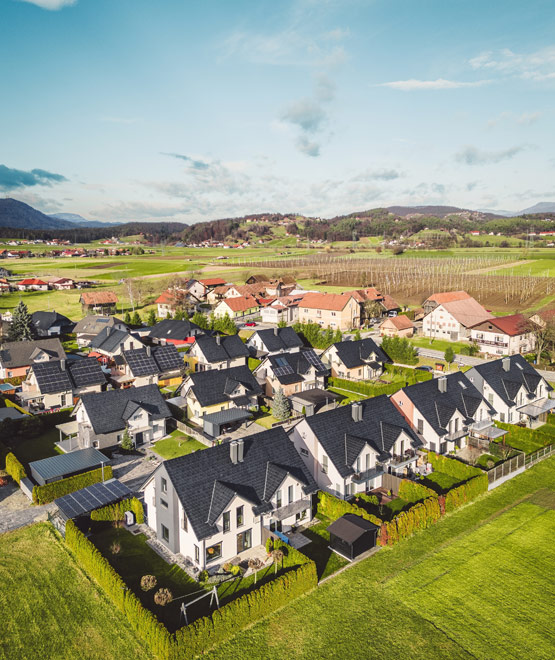Landmark Consultation Paves the Way for the Future of England's Buildings
The Government has released its eagerly anticipated consultation for the Future Homes and Buildings Standard, detailing plans for reducing carbon emissions in new buildings, as well as presenting technical amendments to building regulations and calculation methods.
The Future Homes Standard, along with its commercial equivalent, the Future Buildings Standard, is due for implementation in England in 2025 as per the regulations. Meanwhile, Scotland, Wales, and Northern Ireland possess devolved authority to enact these regulations and standards at their discretion. These standards are integral to the government’s commitment to enhance energy efficiency and reduce carbon emissions in new residential and non-domestic buildings.
GO TO FHS CONSULTATION >Standards for Future Homes and Buildings
Due to the Future Homes Standard a domestic property built in 2025 must have 75-80% lower carbon emissions than one built in 2013. The Future Buildings Standard also establishes similar aims for new non-domestic buildings.
New homes built in 2025 will also need to be ‘zero carbon ready’, with no retrofit work required to benefit from the decarbonisation of the electricity grid and the electrification of heating. Fossil fuel heating, such as oil and gas boilers will be banned in new homes, with a shift to reliance on low carbon heating (such as heat pumps) and heat networks.
The Consultation that has been released today (13th December 2023) proposes the technical standards required in order to meet these standards in 2025.

Elmhurst has yet to review the consultation in full, but has highlighted some key points below which may be of interest to industry:
- Two notional dwellings have been proposed, based on the same fabric standards as Part L 2021 and with space and water heating from a heat pump
- Proposal to retain primary energy, carbon and FEEs metrics from Part L 2021
- Proposal to improve minimum standards for services but no change to minimum standards for fabric
- Improved standards for dwellings created through material change of use, potentially with a whole building standard like new builds
- Proposal for voluntary post occupancy performance testing using SMETERS or Heat Transfer Coefficient (HTC) with developers getting a FHS brand/logo where they complete this testing
- Proposed changes to the regulations permitting local authorities to relax or dispense the energy efficiency requirements in cases where they judge that being required to fully meet the standards would be unreasonable.
- Two options for transitional arrangements, comprising a 6-month or up to 12-month period between the Future Homes and Buildings Standard legislation being laid (in 2024) and it coming into force (in 2025), followed by a 12-month transitional period.
- Call for evidence on Overheating: Seeking evidence on implementation of Part O 2021, and to extend this standard to conversions.
Home Energy Model (HEM): the evolution of domestic energy performance methodology
Alongside the Future Homes and Buildings Standard consultation, the government is also consulting on a new approved calculation methodology called Home Energy Model or HEM, with an initial version to be released alongside the Future Homes Standard in 2025. This would replace the existing Standard Assessment Procedure (SAP) which is currently used estimate the energy performance of homes across the country.
This has big implications for the industry, as HEM will not only be used to demonstrate compliance with the Future Homes Standard, but eventually it will be expanded to include the production of Energy Performance Certificates (EPCs).
Why is HEM replacing SAP in 2025?
A consortium led by Etude, which Elmhurst contributed to, carried out the SAP 11 scoping project and made a number of recommendations, including how to make SAP more accurate, robust, and fit for purpose to support the net zero commitment.
SAP, initially designed for an in site assessor to use basic tools like pen, paper, and calculators, is simple in comparison to today’s industry standards. Although it has been updated over time, its core structure hasn’t changed. This makes SAP less effective for modern homes and technologies, indicating a need for a comprehensive update of its methodology.
Key changes from SAP
To adapt the Home Energy Model for net zero, it’s necessary to modify both its methodology and the related ecosystem.
The main changes that have been listed to the model ecosystem include:
- An open-source methodology
- Changes to the delivery model and provision of software
- A revised database of product characteristics
- Recognising new technologies in the Home Energy Model
- Using “wrappers” to distinguish different use cases
Moreover, the Home Energy Model will also represents a step change in the calculation methodology compared to SAP 10.2, with key changes including:
- Increasing the time resolution
- Building strong foundations on international standards
- A modular architecture
- Modelling energy flexibility and smart technologies
A positive step for buildings and energy performance assessment
Elmhurst’s Managing Director, Stuart Fairlie, welcomes the Future Homes Standard Consultation and is eager to get into the detail of the new look SAP methodology:
“We are pleased to see the Future Homes and Buildings Standard consultation finally released, as well as the additional consultation which proposes a revamped SAP methodology. The introduction of the Home Energy Model comes as no surprise to us having been involved in the initial scoping project commissioned by government back in 2021. The rationale behind this change is to fundamentally improve the calculation methodology used for energy performance assessments and the output of these; to ensure that they are more robust and fit for the future. This we feel, should be viewed as a positive step. HEM should not be seen as a replacement to SAP, rather an enhancement to support the transition to net zero. Although our team is still reviewing the detail, we have every confidence that the importance of energy professionals, assessments and EPCs looks to only be increasing as we move towards 2025”.
